Best Way to Get Rid of Calluses on Big Toe
Calluses on Feet
The buildup of calluses is a result of collection of dead skin cells that solidify and thicken over an area of the foot. This callus development is the body’s guard instrument to secure the foot against extreme weight and friction. Calluses are regularly found on the heel, the big toe or within the ball-of-the-foot. Some calluses have a profound situated core known as a nucleation. This specific kind of callus can be particularly painful to pressure. This condition is frequently alluded to as Intractable Plantar Keratosis. In this article, we will discuss the best way to get rid of calluses on big toe thus relieving your pain.
Quick Reference Corn and Callus Remover Guide
| Category | Product | Description | Rating | Price |
|---|---|---|---|---|
| Best Electric Remover | 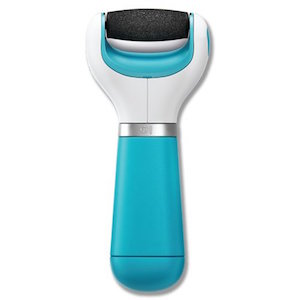 | - Easy to use - Needs 4 AA batteries - The cylindrical head spins 360 degrees |  (5 / 5) (5 / 5) | |
| Best Manual File Scraper | 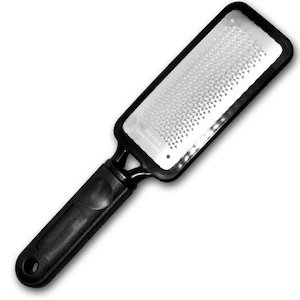 | - Perfect solution for dry, calloused and cracked heels - Large yet light weight design - Gives equally good results on both dry and wet foot surfaces |  (5 / 5) (5 / 5) | |
| Best Callus Gel Remover | 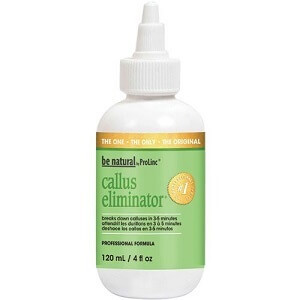 | - Does the work for you - Breaks down calluses in 3-5 minutes - Simply file or buff calluses away |  (5 / 5) (5 / 5) |
Cause of Calluses of the Big Toe
A typical big toe issue is a callus of the big toe. This can result to pain in the side of the big toe and shivering.
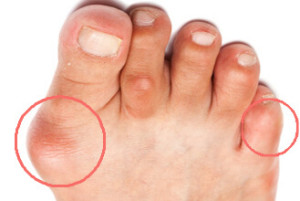
A callus, pain or deadness of the big toe is brought on by a sticking of the big toe joint when walking. This is called hallux limitus. At the point when the big toe can’t move completely as you are going forward, you are compelled to move off of the side of the toe. This squeezes the skin and causes the callus. It can likewise disturb the nerve in the toe and cause pain and numbness. This condition is called “compressive peripheral /fringe neuritis“, which is an aggravation of the nerve in the toe because of unnecessary pressure of the nerve.
Calluses on the big toe are likewise exceptionally common in patients with bunions. This is on the grounds that patients with bunions are compelled to move over the side of the big toe – this squeeze of the skin results to the callus. However, you don’t need to have a bunion for these issues to happen.
If you have bunions, as shown in this image, you will generate friction against your shoes when doing activities. This will in turn cause calluses to form. We will now discuss treatments for a callus on the big toe.
Treatments for Big Toe Callus
Treatment for calluses of the big toe are centered around enhancing movement of the big toe joint and disposing of the pressure in the side of the toe that prompts callus buildup because of weight on the nerve. To enhance movement of the big toe, you should support the curve and exchange pressure off of the big toe joint.
Just in case you haven’t seen it yet – we did a thorough review of the best three products you can buy to remove calluses – make sure you check this out as well!
Here are the best ways we’ve found to remove the big toe callus.
Electric Grinder: Granulating the callus ceaselessly will gradually get rid of the weight that prompts pain and deadness. The simplest way is to utilize an electric processor like the Pedinova. We’ve found it most effective to use it after shower when the skin is soft. You can also check out our reviews of electric callus removers.
Buff away the callus: Another choice to remove the callus on your big toe is a peeling apparatus, for example, the Ped Egg. This takes longer than the Pedinova processor, however it is less costly.
Exfoliating Cream: Exfoliating cream will dispose of the thickened skin that is bringing about pain of the big toe. Put this on every night after you utilize the Ped Egg or grinder on your callus.
 Utilize Callus and Blister Prevention Patch: These callus and blister prevention patches are made of a material called Polytetrafloroethelene (PTFE). PTFE has a low coefficient of friction so it can drastically diminish the friction forces that prompt callus development. Truth be told, PTFE was produced initially as a suture material for delicate structures like veins and nerves. Since it causes so little erosion it doesn’t hurt these thin and delicate structures.
Utilize Callus and Blister Prevention Patch: These callus and blister prevention patches are made of a material called Polytetrafloroethelene (PTFE). PTFE has a low coefficient of friction so it can drastically diminish the friction forces that prompt callus development. Truth be told, PTFE was produced initially as a suture material for delicate structures like veins and nerves. Since it causes so little erosion it doesn’t hurt these thin and delicate structures.
PTFE is additionally accessible in a self-stick patch under the brand name Engo. Engo patches can be connected to the insole of the shoe or on top of an orthotic directly under the big toe. Applying these patches will prevent the buildup of calluses and lower friction. Engo PTFE patches can likewise be connected inside the shoe where there is danger of blistering. Simply cut out the shape you need and after that peel and stick. The Engo patch ought to reach out around 1/4 inches past the edge of the callus.
Alleviate the aggravation: Get rid of the source of progressing pressure that added to the development of your calluses on the big toe. If aggravation isn’t reduced, your calluses won’t recuperate, and evacuation will be trailed by recurrence. This might mean better-fitting shoes that have sufficiently long toe space and don’t choke the toes together, or see reviews of shoes that can help with calluses. If a basic variation from the norm in your toes or feet cause perpetual rubbing, customized shoe might be necessary. Froth wedges between the toes help a few individuals, as well. Restorative surgical methodology is sometimes essential. Wear callus cushions over the developments to protect them from further aggravation.
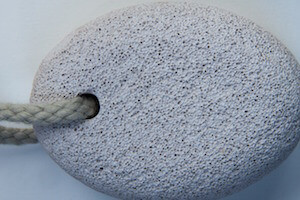 Rub pumice stone over the growths of the callus: Soak your feet in warm, soapy water for around 10 minutes. This will soften calluses, making them easy to scrape away. With a forward and backward movement and moderate pressure, rub a pumice stone over the big toe callus buildup, sanding the calluses down. Stop after each few swipes and give your toe a speedy rinse to uproot pumice stone particles. Repeat as required, make sure to stop before getting to the underlying skin surface.
Rub pumice stone over the growths of the callus: Soak your feet in warm, soapy water for around 10 minutes. This will soften calluses, making them easy to scrape away. With a forward and backward movement and moderate pressure, rub a pumice stone over the big toe callus buildup, sanding the calluses down. Stop after each few swipes and give your toe a speedy rinse to uproot pumice stone particles. Repeat as required, make sure to stop before getting to the underlying skin surface.
Use a topical antibiotic: Use a topical antibiotic to rub the area where the callus was and the surrounding This is done to bring down the danger of disease of rubbed skin. If you got excessively near the skin, utilize a bandage to secure the injury. Look for indications of disease, for example, redness, seepage, swelling or pain, and contact a specialist if you suspect contamination. Apply a lotion to the affected skin also to keep it soft and bring down the probability of recurrence.
Final Thoughts
Never cut or pick off a callus. This can prompt painful injuries, scarring and disease. Callus cushions containing salicylic corrosive makes the healing process fast by enhancing the shedding of dead skin cells. If you have diabetes or circulatory issues in your feet, it is advisable to see your doctor for callus care.
If you have issues not on your big toe, but some other parts of your feet, then check out our guide to the best way to remove calluses from feet.

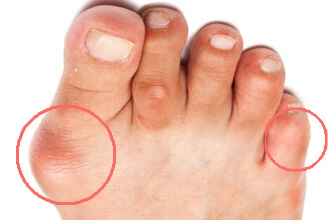
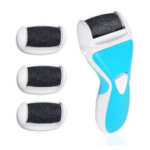
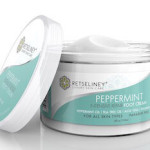

Thank you very much for the helpful information. Some time ago I had my big toe joint fused which is, if I understand you correctly, maybe why I’m getting this huge callous on the side of my big toe. I am going to try some of these methods to see if I can’t alleviate some of the pain and callous.